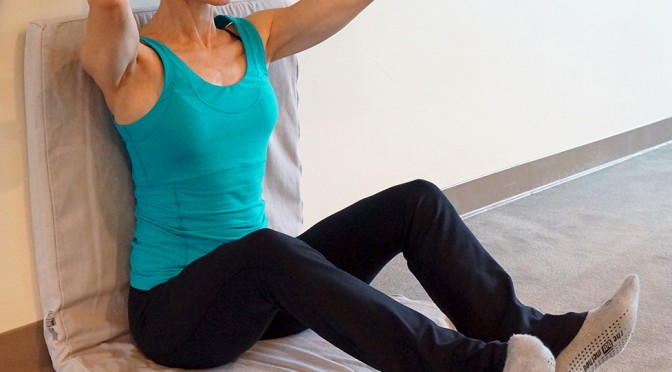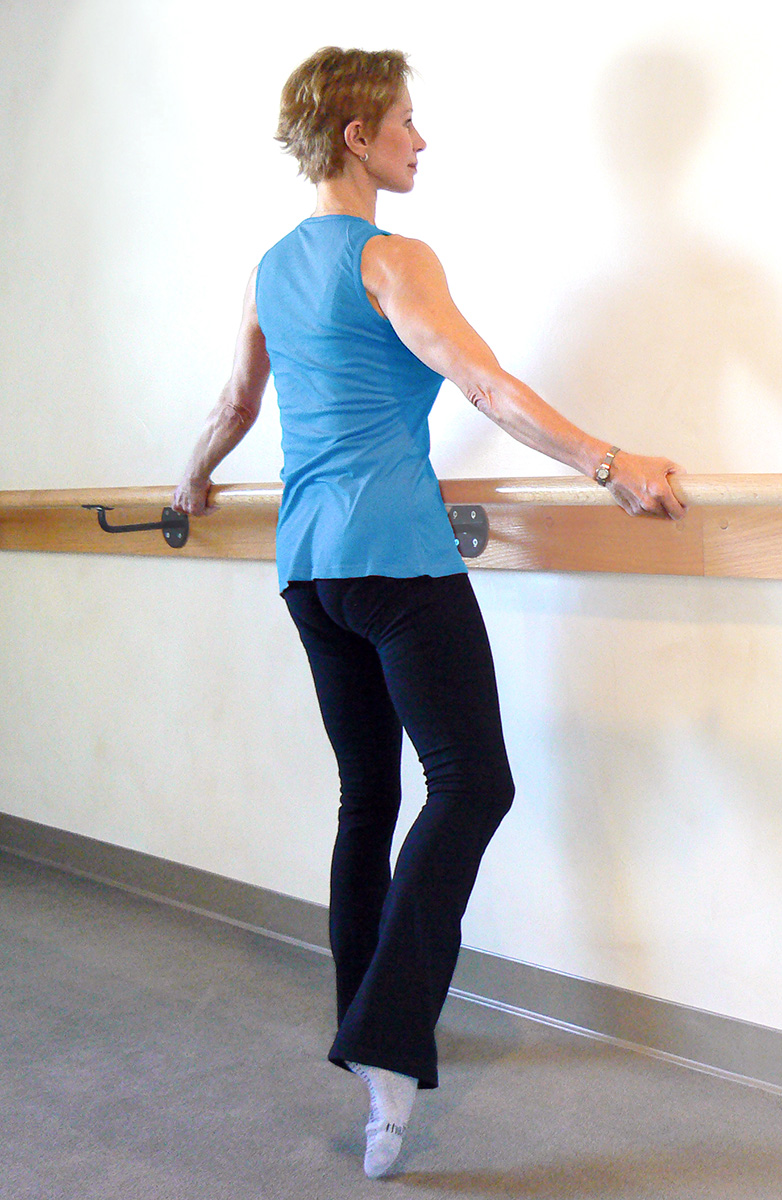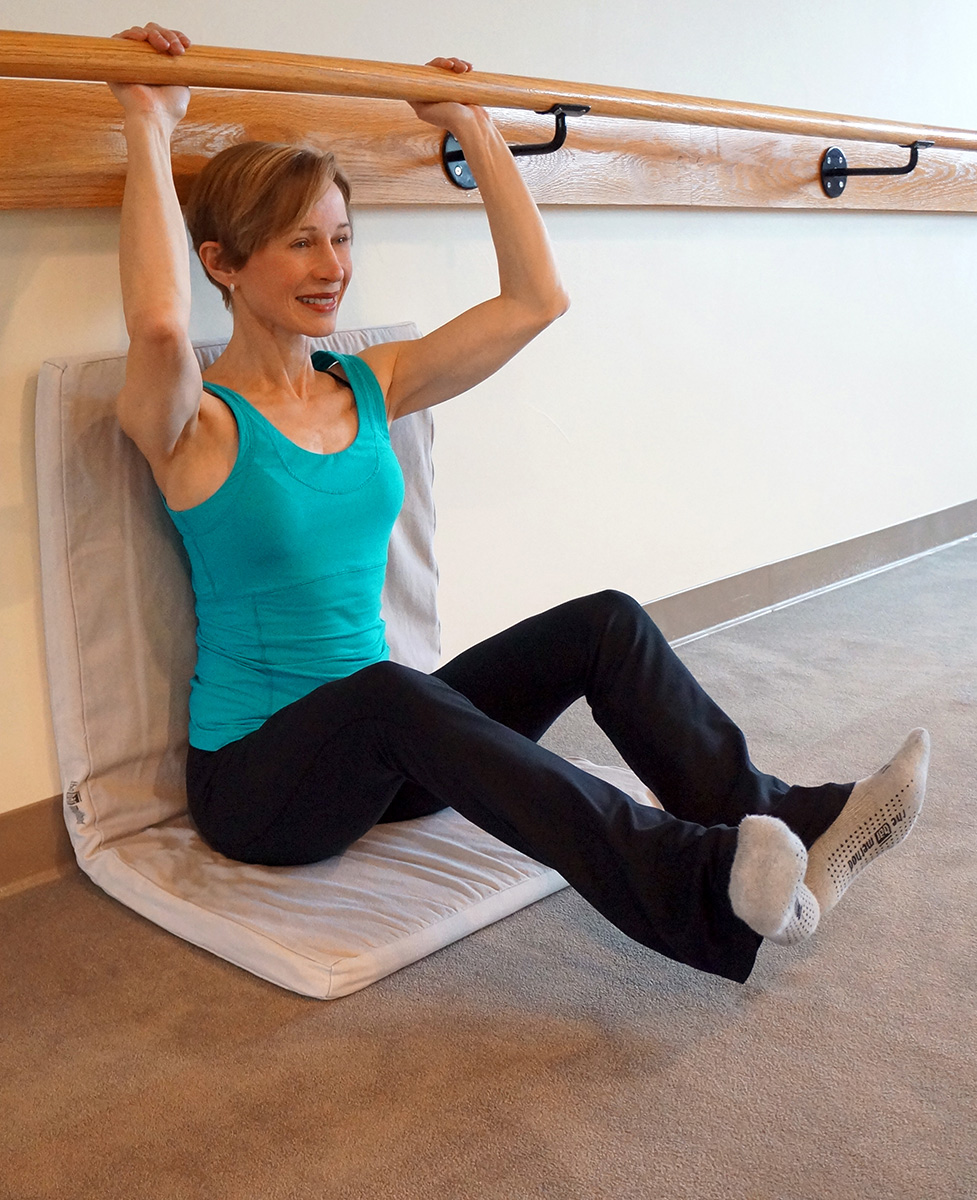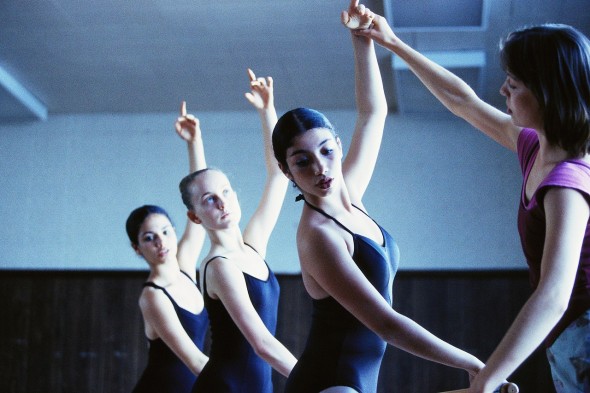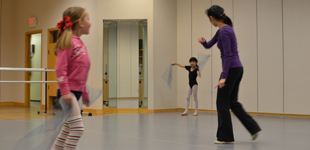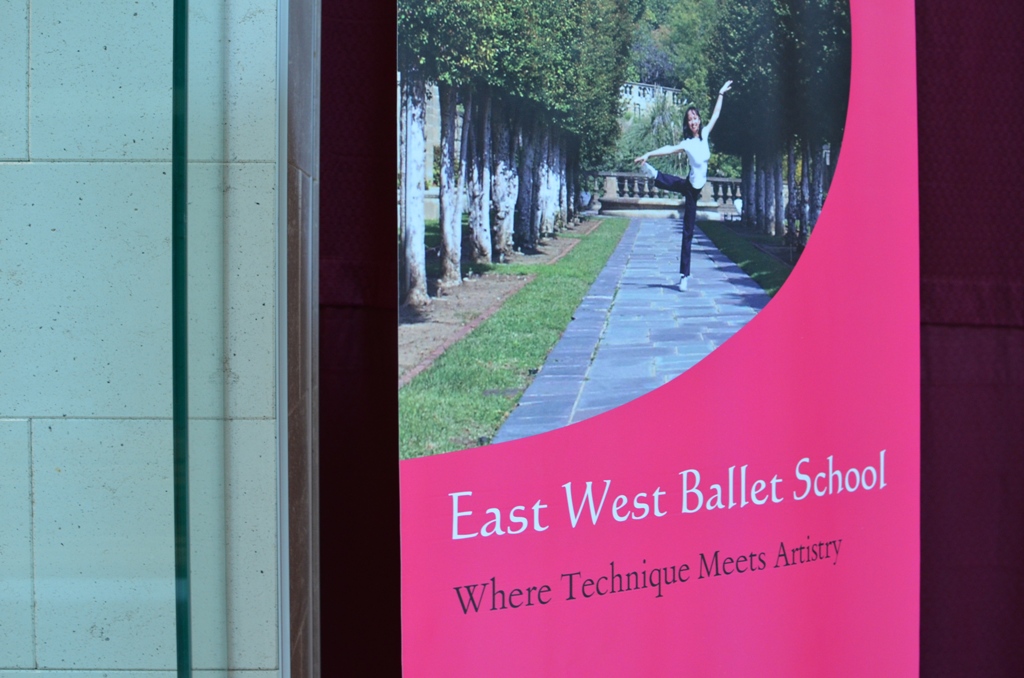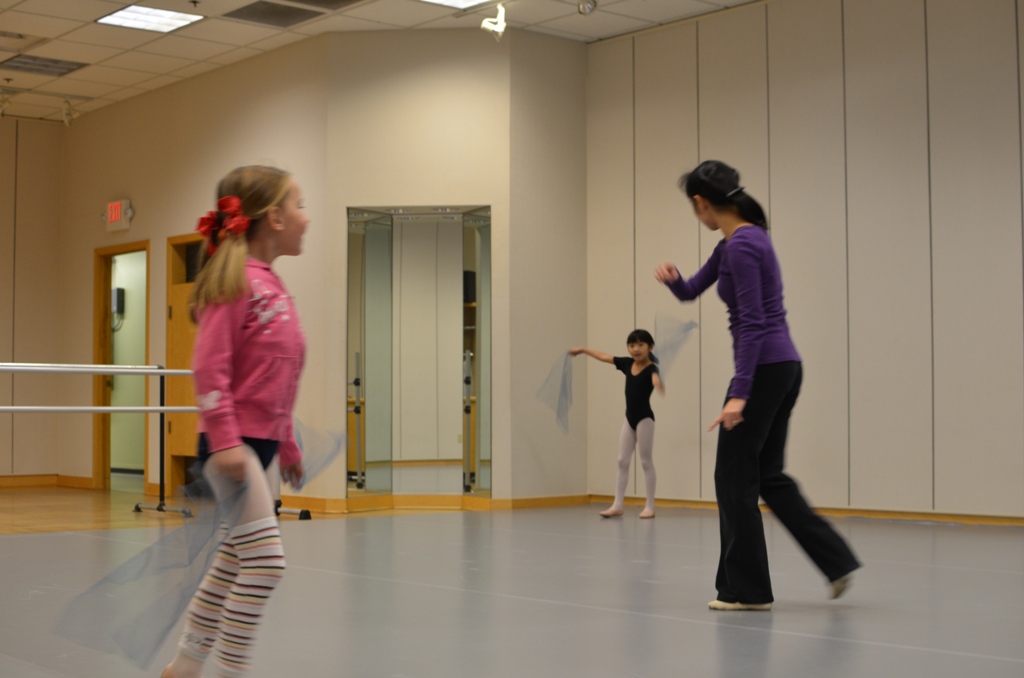Bar Method and other barre based fitness disciplines have become enormously popular among people who want to develop a strong, lean, and flexible body of a ballet dancer. But are you already an adult ballet dancer or just beginning to take ballet classes? Adult ballet can be challenging sometimes in terms of slow progress, the needed time commitment, and the potential for injuries. Adding Bar Method classes to your movement regimen can greatly improve your dancing and enable you to move safely and smartly for many more years.
I casually took jazz and African dance classes in high school and finally discovered ballet classes in college. It wasn’t until graduate school though at the age of 26 that I jumped enthusiastically into ballet classes in Washington, DC. For three years, I took 6 to 9 ballet classes a week at the stellar Maryland Youth Ballet school and inspiring Joy of Motion dance studios. My technique, musicality (I got my undergraduate degree in piano, but not specifically in moving my body through music!), and overall courage and perseverance changed greatly. It was a unique time in my life to have the freedom and time to dedicate to amateur dance. I am so grateful for having the experience. An arts management career, family, and move to Sacramento and St. Louis followed, and now at the age of 40, I am down to 2 to 3 ballet classes a week. Of course, I wish that I could take more, but it is difficult to find great adult ballet classes that work with my schedule (we’re no longer in a large city) and at a reasonable cost. Almost two years ago, I started taking Bar Method classes in St. Louis 3 to 4 times a week.
Here are the top 10 ways Bar Method has changed my dancing:
1. Bar Method is efficient. I can’t carve out time in my schedule to take daily 90 minute ballet classes anymore (plus the warming up period and post-class stretching older dancers have to commit to) and 60 minute Bar Method classes help me maintain a fair amount of core, back, and gluteal muscle strength, plus hamstring flexibility. Every second of Bar Method classes is used effectively. When I do make it to ballet classes during the week, I don’t feel like I’m starting over every time because Bar Method classes keep me strong.
2. An important part of the Bar Method syllabus is tucking your pelvis at certain points of class (sometimes holding throughout an exercise and sometimes alternating between releasing and tucking at defined intervals) and bending forward slightly from the waist while lengthening the lower back. This positioning, while a little extreme for ballet (I try not to think of it as “tucking” in ballet but more engaging my abdominal muscles), teaches you how to engage the dropping of the tailbone, the simultaneous upwards and downwards extension of the lower back, and just how far forward your torso (bending from the waist) needs to be to find a dynamic balance in ballet. My incorrect ballet tendencies of letting my weight drop into my heels and turning with my torso tilting slightly backwards have improved with my newly developed Bar Method muscles and mindset.
3. It wasn’t until I took Bar Method classes for about a year that I finally started to feel what it’s like to dance with my upper back. Adult dancers often spend so much of our class time trying to memorize the combinations, figuring out our balance, trying to go to the left, and wondering why our leg seems so incredibly low to the ground in arabesque, among many, many other goals. Dancing with the upper back isn’t necessarily an initial priority for adult ballet dancers. Bar Method technique opens the chest, strengthens the numerous muscles in the upper back, teaches your body how to drop the scapula while engaging other arm muscles, and increases general shoulder muscle stability. This upper back strength and stability has improved my port de bras, enabled my neck to lengthen upwards, has made pirouettes easier and cleaner, made my epaulement more natural and supported, and generally allowed my lower body to feel lighter and quicker in petit allegro.
4. Related to developing upper back strength, Bar Method classes gave me arm muscles! It’s very easy to focus on the legs and torso in ballet class, but there is a reason professional dancers have such sculpted arms. They have to use them in order to make the rest of their body work in ballet. The arm muscles and stability that I have developed from Bar Method classes have improved my pirouettes, overall line, strength to extend energy through my fingertips, port de bras, epaulement, and my ability to look at and move to where I’m going. In general, my body feels more balanced and efficient with significant arm strength.
5. Bar Method exercises push me both physically and mentally to an uncomfortable place, but never an unsafe one. A big piece of ballet is taking risks in class and in performance. Many adult ballet dancers struggle somewhat with letting go, not over thinking technique, and leaving their heart out there on the dance floor. Bar Method instructors routinely say, “Get comfortable with that uncomfortable feeling,” “Your mind will give up before your body does,” and “Dig deep,” all while carefully monitoring individual students for any unsafe body placement. These mantras, individual corrections, and the enormous and deceptive difficulty of Bar Method exercises have conditioned me to be a little more courageous in ballet. These days in ballet classes, my physical and mental endurance is better, my movement more free, and my mistakes much more grand!
6. For the first time in my life, I can actually feel and engage my transverse abdominis muscle. Granted, I still have a layer of fat over it (thanks to my beautiful daughter), but thanks to Bar Method classes, I can now purposefully use these muscles in ballet. Leg extensions, plies, pirouettes, balances, jumps, and more, all make a bit more sense and are easier with a stronger core. I studied Pilates (mainly reformer, chair, and mat work) for several years, but have found that Bar Method more efficiently develops the deep transverse abdominis muscle at a more economical cost per class (than pilates equipment classes) as well.
7. Bar Method grew out of exercises created by a German ballet dancer, Lotte Berk. She fled the Nazis in the late 1930s and made her way to London where she injured her back dancing. In response to her injuries, Ms. Berk developed a fitness routine which combined ballet conditioning with rehabilitative therapy. She opened up her own studio in London and the popular Lotte Berk Method eventually made its way to America. Burr Leonard studied the Lotte Berk Method in New York for years and gradually opened up several studios in the United States. After a decade, Ms. Leonard developed her own barre based fitness curriculum, working closely with a physical therapist to rework some of the Lotte Berk exercises to make them safer, more effective, and more accessible to a wider population. Bar Method exercises were based on a dancer’s vocabulary and experiences, so it’s no surprise that they are beneficial to adult ballet dancers. Read more about the history of Bar Method.
8. Bar Method exercises increase flexibility. The active stretching portions of Bar Method classes are fairly brief but effective. The stretches primarily focus on parallel position hamstring flexibility, lengthening the hip flexors, and oblique extensions, among others. So much of ballet class stretching focuses on turned out positions, so it is nice to balance out the body with more parallel alignment stretches. I do extra flexibility exercises after class and at home to supplement.
9. If you haven’t been seriously dancing since you were 5, most likely developing and sustaining turn out in ballet class is an ongoing challenge. Many of the Bar Method exercises carefully strengthen the inner thighs which help the adult ballet dancer more easily maintain turnout in ballet class and performances. There is a nice mixture of turned out and parallel exercises in Bar Method classes which keeps muscle development well balanced.
10. Bar Method classes are a safe complementary workout with ballet class. Although incredibly tough at times, Bar Method exercises most likely will not cause an injury or work against your ballet training. I have tried some of the other barre based disciplines in different cities in the U.S. (Pure Barre, Dailey Method, and Barre 3), and find that Bar Method is the safest most rigorously researched regimen. The logical and thoughtful progression from exercise to exercise (much like the series of ballet barre exercises), the duration of each exercise, the options offered depending on how your body is feeling on a particular day, the individual attention to form, the extensive training each instructor completes, the overall friendliness and warmth of Bar Method studios, and the quick results you will see in your body and mind, all come together to create a highly effective fitness discipline.
There are two areas I would recommend adult ballet dancers carefully watch in Bar Method classes: the possible over development of the quadriceps and the under development of the feet and ankle muscles. Bar Method will shape and build the quadriceps intensely and in ballet you do not want to let these muscles take over in any leg movements. You need them of course to a certain extent in ballet, but the inner thigh muscles and transverse abdominis should be a greater priority of engagement when moving the legs. Also, there is not a great deal of time in Bar Method class dedicated to the strengthening of the feet and ankles, at least not the kind of superhero type foot and ankle strength and endurance that ballet requires. Just be sure to work your feet and ankles enough in ballet classes and at home, because your newly developed sculpted Bar Method leg, torso, and arm muscles will need an extra strong base of support for dancing.
Ready to improve your ballet dancing? Bar Method in St. Louis offers an excellent and welcoming group of teachers and beautiful studios in the neighborhoods of Town & Country and Brentwood. Bar Method St. Louis offers 70 classes a week from the early morning to the early evening hours. Owner and instructor Jessica Prasse is truly an inspiration and has attracted a large group of dedicated and enthusiastic clients who are happily addicted to Bar Method. People like to celebrate their birthdays at Bar Method St. Louis classes where you might get an extra set of push ups or thigh work as a special treat! Class prices at the St. Louis studios range from approximately $7/class to $20/class depending on the class package you purchase and how often you attend.
There are also Bar Method studios across the country and in Canada. Class prices range from less than $10 a class to approximately $37 a class depending on where you are in the country, what class package you purchase, and how often you take class.
Bar Method FAQ
Bar Method Online Videos
Overview of Bar Method exercises
Happy dancing and Bar Method-ing for many more years!
Photos: Bar Method Headquarters. Featuring Bar Method Founder Burr Leonard.
